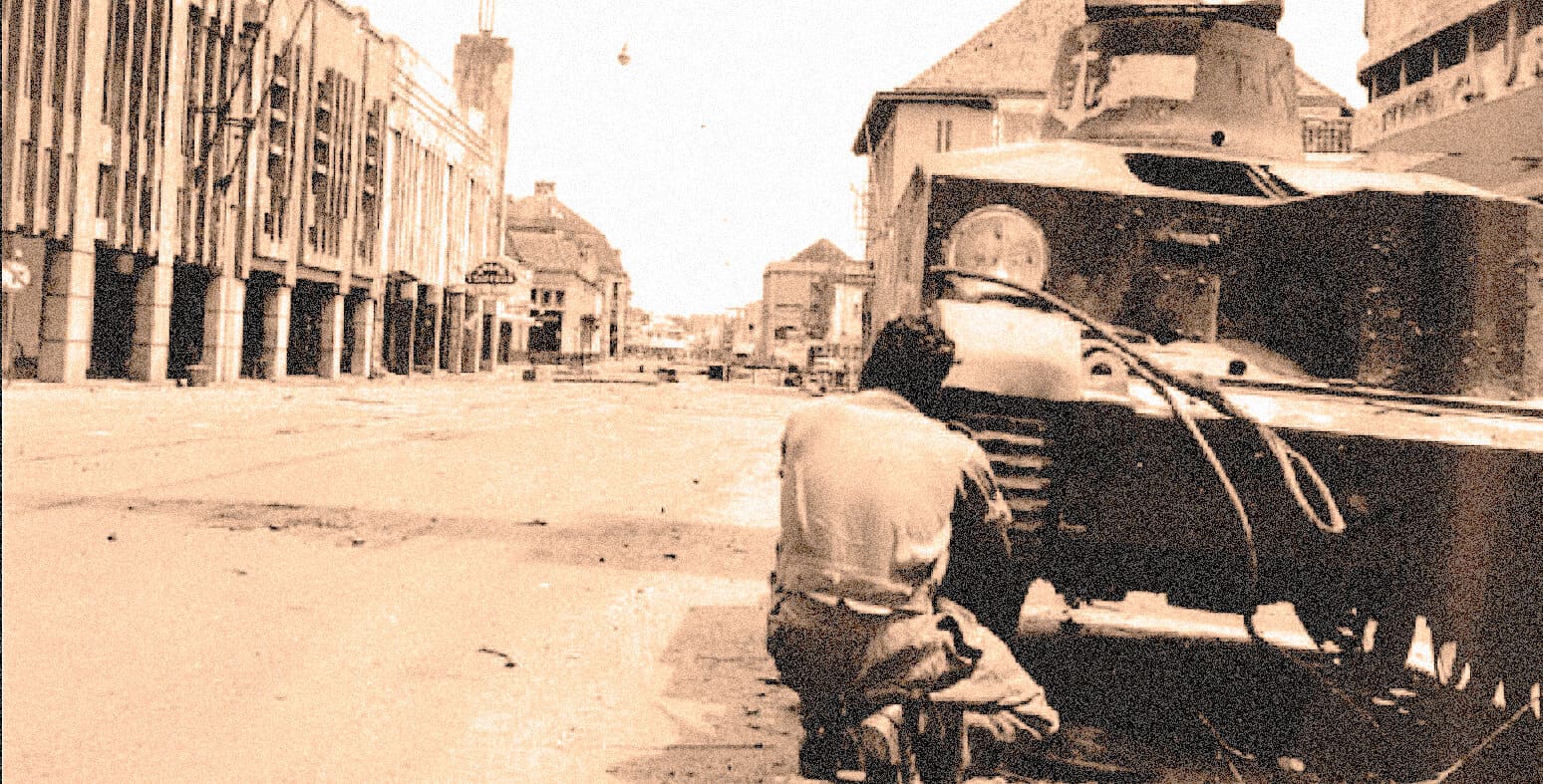
 |
[laterpay_premium_download target_post_id=”54105″ heading_text=”Download For $1.99:” description_text=”December 21, 1945 – Don Bell Report From Manila – Mutual – Gordon Skene Sound Collection” content_type=”link”] |
December 21, 1945 – Don Bell report from Manila -Mutual Broadcasting – Gordon Skene Sound Collection –
December 21, 1945. The Independence movement in the Dutch East Indies was quickly gaining momentum and resistance to it was gaining intensity.
The Indonesian National Revolution, or Indonesian War of Independence, was an armed conflict and diplomatic struggle between the Republic of Indonesia and the Dutch Empire and an internal social revolution during postwar and postcolonial Indonesia. It took place between Indonesia’s declaration of independence in 1945 and the Netherlands’ recognition of Indonesia’s independence at the end of 1949.
The four-year struggle involved sporadic but bloody armed conflict, internal Indonesian political and communal upheavals, and two major international diplomatic interventions. Dutch military forces (and, for a while, the forces of the World War II Allies) were able to control the major towns, cities and industrial assets in Republican heartlands on Java and Sumatra but could not control the countryside. By 1949, international pressure on the Netherlands and the partial military stalemate became such that it recognised Indonesian independence.
The revolution marked the end of the colonial administration of the Dutch East Indies, except for Netherlands New Guinea. It also significantly changed ethnic castes as well as reducing the power of many of the local rulers (raja). It did not significantly improve the economic or political fortune of the majority of the population, although a few Indonesians were able to gain a larger role in commerce.
The Dutch accused Sukarno and Hatta of collaborating with the Japanese, and denounced the Republic as a creation of Japanese fascism. The Dutch East Indies administration had just received a ten million dollar loan from the United States to finance its return to Indonesia.
The Netherlands, however, was critically weakened from World War II in Europe and did not return as a significant military force until early 1946. The Japanese and members of the Allied forces reluctantly agreed to act as caretakers.[30] As US forces were focusing on the Japanese home islands, the archipelago was put under the jurisdiction of British Admiral Earl Louis Mountbatten, the Supreme Allied Commander, South East Asia Command. Allied enclaves already existed in Kalimantan (Indonesian Borneo), Morotai (Maluku) and parts of Irian Jaya; Dutch administrators had already returned to these areas. In the Japanese navy areas, the arrival of Allied troops quickly prevented revolutionary activities where Australian troops, followed by Dutch troops and administrators, took the Japanese surrender (except for Bali and Lombok).Due to the lack of strong resistance, two Australian Army divisions succeeded in occupying eastern Indonesia.
The British were charged with restoring order and civilian government in Java. The Dutch took this to mean pre-war colonial administration and continued to claim sovereignty over Indonesia. The British and Indian troops did not, however, land on Java to accept the Japanese surrender until late September 1945. Lord Mountbatten’s immediate tasks included the repatriation of some 300,000 Japanese, and freeing prisoners of war. He did not want, nor did he have the resources, to commit his troops to a long struggle to regain Indonesia for the Dutch. The first British troops reached Jakarta in late September 1945, and arrived in the cities of Medan (North Sumatra), Padang (West Sumatra), Palembang (South Sumatra), Semarang (Central Java) and Surabaya (East Java) in October. In an attempt to avoid clashes with Indonesians, the British commander Lieutenant General Sir Philip Christison diverted soldiers of the former Dutch colonial army to eastern Indonesia, where Dutch reoccupation was proceeding smoothly. Tensions mounted as Allied troops entered Java and Sumatra; clashes broke out between Republicans and their perceived enemies, namely Dutch prisoners, Dutch colonial troops (KNIL), Chinese, Indo-Europeans and Japanese.
The first stages of warfare were initiated in October 1945 when, in accordance with the terms of their surrender, the Japanese tried to re-establish the authority they had relinquished to Indonesians in the towns and cities. Japanese military police killed Republican pemuda in Pekalongan (Central Java) on 3 October, and Japanese troops drove Republican pemuda out of Bandung in West Java and handed the city to the British, but the fiercest fighting involving the Japanese was in Semarang. On 14 October, British forces began to occupy the city. Retreating Republican forces retaliated by killing between 130 and 300 Japanese prisoners they were holding. Five hundred Japanese and two thousand Indonesians had been killed and the Japanese had almost captured the city six days later when British forces arrived. The Allies repatriated the remaining Japanese troops and civilians to Japan, although about 1,000 elected to remain behind and later assisted Republican forces in fighting for independence.
Here is a report, delivered via Shortwave radio, to Mutual Broadcasting in New York, from Don Bell who was reporting from Manila the goings on in the Dutch East Indies, December 21, 1945.





